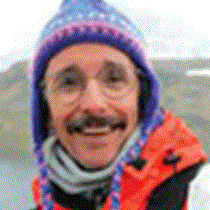Tracy Arm, Williams Cove
And so we sail into the Ice Age, south from Juneau down Stephens Passage, and awaken this morning in Tracy Arm, face to face with a tidewater glacier. Icebergs all around. Bedrock cliffs rising high above. Clouds veiling the highest peaks. Wisps of fog like something out of Lord of the Rings, only better, with no bad guys or dark spirits. Harbor seals in silt-laden waters, big, dark eyes taking our stares and turning them back on us. The glacier dropping tall towers of ice into the sea, the gentle swell - created by the icefalls - lifting our Zodiacs as we cruise about. Cameras whirring. The ice talking, singing, popping. We shut off the Zodiac engines and let everything go quiet, so the place can speak for itself. Such eloquence. We haul a large piece of ice into one of the Zodiacs and bring it aboard the National Geographic Sea Bird to have a contest: How long will it take to melt? It’s dense ice, made by a glacier, not the same as the ice in your freezer. This natural sculpture formed under pressure, high in the glacier, where successive snowfalls compressed over many years into dense glacial ice. It’s exotic and otherworldly, a work of art.
As Johann Wolfgang von Goethe said: “Nature is the art of God.”
Is there really a drought in the Midwest? Here, water is everywhere. The land is made of water, the shaggy green temperate rain forest, the beds of moss, the intertidal rocks bathed in barnacles and rockweed, a golden brown algae that glistens on shore, salmonberries and beach greens and the medicinal flower, yarrow. Deep in the forest, we walk beneath a canopy of majestic Sitka Spruce and western hemlock, tall conifers rising high overhead.
While some of us go hiking, others push off in sea kayaks, yellow doubles and red singles. We’re a flotilla, our paddles rising and falling as we skittle around Williams Cove in a soft rain, the droplets dancing on the sea. Voices carry over the water like musical murmurs.
Such a full day, our first day, a day of greatness and gratitude. We collapse at the end of day, thankful in the wilderness of Alaska, the America-that-used-to-be, with its 100 million acres of national parks, preserves, monuments, wildlife refuges, national forests and wild & scenic rivers. May it be so forever.




